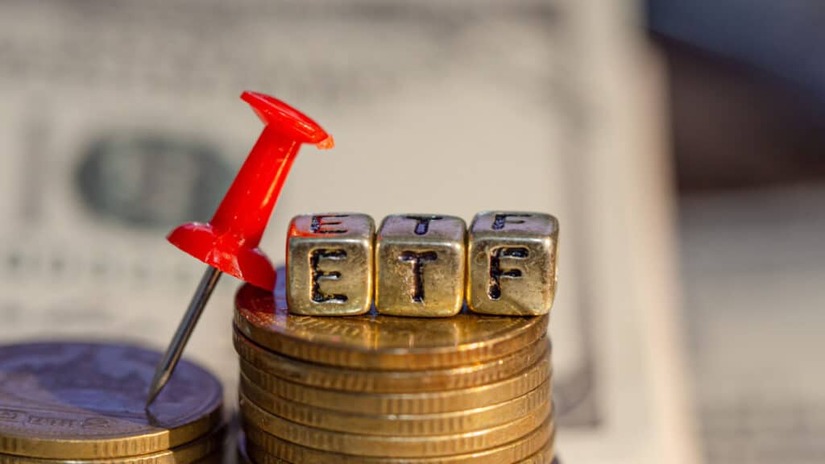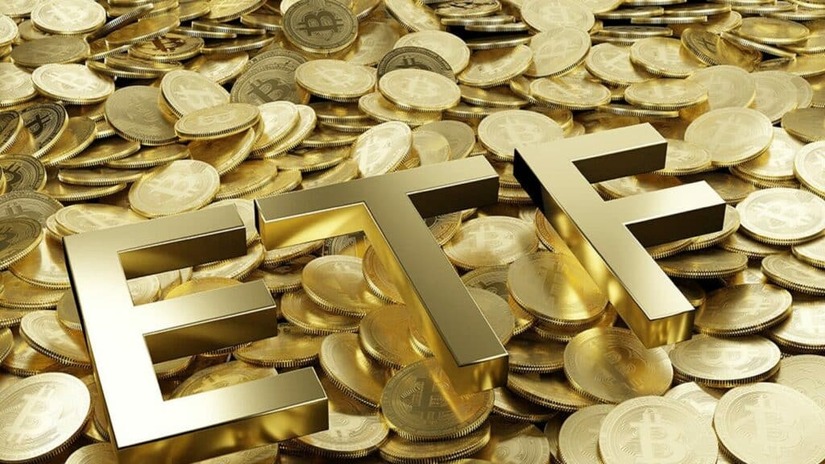12 Top Gold ETFs
In general, we don’t recommend buying gold. For those who want exposure to gold, we have constructed a list of some good ETFs.
If you have any questions or want to invest as an expat or high-net-worth individual, you can email me (advice@adamfayed.com) or use these contact options.
Table of Contents
Introduction
Choosing the top gold ETFs for you can be difficult given the abundance of options available. The 12 top gold ETFs are listed for you in this article.
Cost should be taken into account before anything else when choosing a gold ETF. To make sure you’re getting the best value possible given the high expense ratios of many of these funds, it’s crucial to compare them.
What Are Gold ETFs?
In reality, gold ETFs are a mashup of three distinct financial instruments: closed-end funds, exchange-traded funds, and exchange-traded notes.
Closed-end funds (CEFs)
With a few important exceptions, CEFs function mostly in a similar manner to ETFs. CEFs must be registered with the SEC and are run by advisers.
After receiving their initial infusion of funds from an initial public offering (IPO), CEFs shut their doors to future investors. Contrary to mutual funds, which determine their net asset value (NAV) just once per day at the end of trading, CEFs routinely determine their NAV.
Exchange-traded funds (ETFs)
An investment fund that is exchanged on stock exchanges like a stock is known as an exchange-traded fund. Assets such as bonds, commodities, or equities can be used to create an ETF.
Exchange-traded notes (ETNs)
ETNs resemble bonds more than stocks, despite the fact that they don’t pay interest. Unsecured debt products called ETNs follow an index, such the spot price of gold, as their underlying measure. Liquidity risk and tracking error risk are major concerns for ETNs.
What Is The History Of Gold ETFs?
Although trading in gold has been going on for a very long time, the precious metal has remained the same while the trading marketplaces have altered.
The majority of financial transactions now take place online, and real gold is a quaint alternative because money is now written on paper. Bullion is expensive to move and store, and there is a considerable difference in product quality.
Following the dot-com boom, there was still a demand for gold, and many traders desired a more effective means of gaining access to bullion.
While it’s amusing to imagine NYSE dealers hurling gold bricks at one another across the trading floor, a more workable approach was required to bring gold trading to the exchange floor.
With the introduction of SPDR Gold Trust (GLD) as an ETF in 2004, investors now have access to real gold without having to transfer, store, or insure it. Physical gold bullion kept in a London vault is used by the SPDR Gold Trust to track the spot price of gold.
GLD offered investors two benefits that owning bullion did not, including:
- It is no longer necessary for investors to access gold physically in order to invest in the precious metal.
- The ability of investors to purchase and sell gold assets on exchanges significantly increased liquidity and cut down on transaction costs.
As soon as investors could profit from the metal without having to pay high storage and transaction expenses, the top gold ETFs took popularity.
Numerous of the top gold ETFs as well as associated products are now offered at brokerages all around the world.
ETFs and other similar instruments often invest in shares of firms that mine, manufacture, and sell gold as well as real gold bullion. Although it may not seem like a significant distinction, the IRS has a very different perspective.
ETFs do not receive advantageous tax treatment if the share price is based on the direct ownership of gold. Gold ETFs that invest in real bullion are taxed at the same rate as collectibles since physical gold is regarded as such.
Shares of ETFs like GLD are taxed at the collectable level instead than the standard long-term capital gains rate of 20%, which may be as high as 28%.
Additionally, since Roth IRA funds are taxed at deposit and any gains from the price of gold won’t be taxed at the collectible rate, you might think about investing in ETFs that hold physical gold in a retirement account like a Roth IRA.

Pros And Cons Of Investing In Gold ETFs
The best way to diversify your portfolio while taking advantage of the potential growth of the precious metal is by investing in a gold ETF.
This is such a wise decision, but is now a good time to buy a gold ETF? Now let’s weigh the advantages and disadvantages of buying gold ETFs.
Pros Of Investing In Gold ETFs
Diversification
Using gold ETFs, investors can diversify their holdings. Due to the fact that gold ETFs are not correlated with the stock market, investors can hedge against unexpected market downturns by holding some of their assets in gold ETFs.
Low Volatility
The fact that gold ETFs have lower volatility than stocks or other assets is one of the main benefits of investing in them. They are a less risky choice for investors because of this benefit.
Tax Advantages
A gold ETF investment has some tax advantages as well. Since gold is regarded as a commodity, investors are eligible for a number of tax deductions.
Transparency
The transparency of gold ETFs is another benefit. Through online platforms, investors can easily keep tabs on their investments’ performance and valuation.
Affordability
The fact that gold ETFs are reasonably priced is another fantastic feature. Many ETFs have share prices of around $50, which makes them a desirable choice for investors on a tight budget.
Cons Of Investing In Gold ETFs
Low Liquidity
Low liquidity could be a problem for gold ETFs as well. As a result of a lack of buyers or sellers, it may take investors longer to buy or sell shares.
Unpredictability
Even though gold ETFs have historically been a safe investment, they still have a chance of being unpredictable. It can be difficult to forecast gold’s short-term movements because market factors determine its price.
Low Returns
Comparing gold ETFs to other investments like stocks or bonds, they might offer lower returns. Despite the impressive returns gold has historically experienced, these results might not always be reliable.
12 Top Gold ETFs
1. SPDR Gold Shares (GLD)
The SPDR Gold Shares, one of the top gold ETFs, is the most significant and liquid gold ETF. It serves as the industry benchmark for investors looking for direct access to the price of the yellow metal. Gold bullion, which is kept in safe vaults, makes up all of the ETF’s assets.
For this specific gold ETF, investors must pay more. Compared to other ETFs that hold gold bullion in physical form, it has a higher expense ratio.
Even so, it’s still far less expensive than the price of transporting, protecting, and keeping gold bars and coins, particularly when taking into account its liquidity.
Because of its scale, institutional investors like pension funds like to utilize it as a hedge against risk factors like inflation.
2. SPDR Gold MiniShares Trust (GLDM)
In order to avoid losing market share to competitors like the iShares Gold Trust, the same investment managers that handle the SPDR Gold Shares ETF established the SPDR Gold MiniShares Trust, a lower-cost product, for cost-conscious retail investors.
They decided against altering its hugely profitable and popular SPDR Gold Shares product, which is well-liked by institutional investors, in favor of launching a new ETF.
Due to its reduced expense ratio and ownership of gold bullion, this gold ETF provides the same direct exposure to the price of gold.
For investors looking for the least expensive way to invest in gold without actually owning any, this ETF is a great choice. However, compared to larger gold ETFs, this one has less liquidity due to its smaller size. On the other hand, since its ultra-low expense ratio won’t significantly affect returns, it should do the best job of long-term gold price mirroring due to its lower costs.

3. iShares Gold Trust (IAU)
The SPDR Gold Shares and the iShares Gold Trust, two of the top gold ETFs, are virtually identical. This makes it yet another fantastic method for making direct gold investments. Additionally, compared to its bigger rival, it boasts a lower expense ratio.
An excellent substitute for owning physical gold without the hassle and cost of storing or insuring bars and coins is owning shares in this ETF. These are handled by the ETF, which keeps its bullion in JPMorgan Chase’s London branch (NYSE:JPM).
The performance of this gold ETF has generally been excellent in terms of tracking the price of gold, with only a slight underperformance brought on by its expense ratio.
4. iShares Gold Trust Micro (IAUM)
IAUM, which is essentially BlackRock’s GLDM, has the distinction of “cheapest U.S. gold ETF” at the moment. To GLD, GLDM is what IAUM is to IAU. BlackRock took advantage of the chance to lower its expense ratio by one basis point, or by 0.01%, from GLDM’s low level of 0.1%.
IAUM, one of the top gold ETFs, is currently the lowest cost option available with an expenditure ratio of 0.09%. Additionally, the share price of the ETF is around half that of IAU, making it significantly more cheap for investors.
The ETF has drawn just over $1 billion in AUM since its launch in 2021, partly as a result of its low cost ratio. IAUM now has 18.64 tons of gold in its trust.
5. ProShares Ultra Gold (UGL)
Investing in GLD options may provide traders greater exposure to changes in the price of gold, but doing so can be challenging. Another choice is UGL, which aims to achieve a daily return that is twice as good as that of the Bloomberg Gold Subindex, its benchmark.
UGL, one of the top gold ETFs, will yield 2% if the index increases by 1% in a day. In contrast, UGL will decrease by 2% if the index decreases by 1% in a day. UGL is a leveraged ETF as a result. It’s crucial to remember that the leverage aim is only meant to be precise for one day.
Due to volatility drag and compounding, over extended periods of time, the returns of UGL may stray from being exactly two times that of its index. As a result, UGL works best as a trading instrument for brief holding times. The expense ratio for the ETF is also higher, at 0.95%.
6. VanEck Vectors Gold Miners ETF (GDX)
The largest ETF owning shares of significant gold stocks is the VanEck Vectors Gold Miners ETF, which is one of the top gold ETFs. For individuals who wish to invest in mining businesses in order to play the gold market, it is thus the best gold ETF.
Stocks of mining firms have the potential to outperform gold prices. This is due to the fact that they may profit from the combined catalysts of increased output and the price of gold.
Owning mining stocks, however, carries a higher level of risk than buying gold directly. That’s because underperformance may be brought on by cost increases and other things.
This gold ETF had shares in more than 50 gold mining firms as of September 2021. The following five gold mining giants were among its top holdings, in order of market capitalization:
- Newmont (NYSE:NEM)
- Barrick Gold (NYSE:GOLD)
- Franco-Nevada (NYSE:FNV)
- Wheaton Precious Metals (NYSE:WPM)
- Newcrest Mining (ASX:NCM)
These organizations are among the biggest in the world for gold. The largest mining company on this list has a market cap of $47 billion, while the smallest has a market cap of $15.5 billion.
In total, these top five holdings account for more than 46% of the assets of this gold ETF, with Newmont leading the pack at more than 15%.
This makes this ETF perfect for investors who prefer quality over quantity because it increases investors’ exposure to the largest gold mining companies in the world.
7. VanEck Vectors Junior Gold Miners ETF (GDXJ)
The VanEck Vectors Junior Gold Miners ETF, one of the top gold ETFs, has the most potential for growth. It does this by emphasizing junior gold miners, who are smaller mining firms, some of which are still in the exploratory stage.
These smaller miners might increase their output more quickly and offer better returns than their bigger competitors. There is more danger associated with the increased payoff potential, though.
This is because they lack the size of their more established competitors, making mistakes like cost overruns on mine development more expensive to investors.
Considering its size and expense ratio, the VanEck Vectors Junior Gold Miners ETF is a good size. Nearly 100 assets make up this gold ETF. The top five are as follows:
- Pan American Silver(NASDAQ:PAAS)
- Yamana Gold (NYSE:AUY)
- Evolution Mining (ASX:EVN)
- Endeavour Mining (TSX:EDV)
- First Majestic Silver (NYSE:AG)
The largest holding on this list, with a market capitalization of $6.2 billion, is a lot smaller than the majority of those held by the VanEck Vectors Gold Miners ETF.
Additionally, less than 25% of the assets in this ETF are represented by its top five holdings. Investors are therefore broadly exposed to a number of emerging gold and silver mining stocks.
8. Direxion Daily Gold Miners Index Bull 3X Shares (NUGT)
Investors can obtain triple exposure to gold miners through this fund, a leveraged ETF. Even though NUGT has a high expense ratio of 1.11%, some investors find its high leverage to be attractive.
9. Aberdeen Physical Gold Shares ETF (SGOL)
The cheapest US gold ETF prior to the introduction of GLDM and IAUM was SGOL. Although this is no longer the case, SGOL is still worthwhile to check out.
SGOL, like many other spot gold ETFs, is backed by actual gold bullion, in this instance gold that is kept in vaults in Zurich and London. All of the gold that is kept has been completely allocated, which means that an independent auditor has individually accounted for each bar.
Investors may discover a 53-page document on the SGOL website that identifies every gold bar that the ETF presently owns, along with its brand, serial number, shape, weight, assay, and vault location.
Investors that value transparency may find SGOL to be an excellent choice. The expense ratio for the ETF is 0.17%.

10. GraniteShares Gold Trust (BAR)
BAR, one of the top gold ETFs, is an additional illustration of a gold ETF with high transparency. The ETF owns bullion that is kept in a London vault that is twice-yearly audited by independent auditor Bureau Veritas and whose custodian is ICBC Standard Bank PLC.
Additionally, no loans may be made for the gold bars. GraniteShares makes a list of every gold bar the ETF owns available every day. The list contains information about each gold bar that is stored, including its location, number of bars, serial number, fineness, gross weight, and packing ID.
0.1749% of BAR’s expenses are related to costs. 454,198 Troy ounces of gold are kept in storage by the ETF, which has attracted about $876 million in AUM.
11. Invesco DB Precious Metals Fund (DBP)
The fund is among the most economical ways to get exposure to the precious metals market because of its low annual fees and expenses. Additionally, the fund manager keeps a close eye on it to make sure it continues to be one of the top gold ETFs to invest in.
Additionally, by using a special indexing strategy, the fund can track the fundamental performance of all four precious metals without assuming additional risk.
12. US Global GO GOLD and Precious Metal Miners ETF (GOAU)
The US Global GO GOLD and Precious Metal Miners ETF, one of the top gold ETFs, is a final choice that connects you with miners of not only gold but other precious metals.
Less than 30 companies, whether actively through mining or passively through ownership of royalties or production streams, are represented in this small portfolio and are involved in the production of gold or other precious metals.
That’s not a bad deal when you consider how other precious metals and the companies that mine for them can benefit from many of the same factors that can boost the price of gold, such as a falling US dollar.
Final Thoughts
A great way to safeguard your financial future and make the most of your money is to invest in gold ETFs. The top gold ETFs can diversify your portfolio and safeguard your investments.
You can invest in gold with confidence using one of these top gold ETFs because they are dependable and resilient to market volatility. Whether you’re seeking long-term returns or short-term capital gains, these top gold ETFs are worthwhile to take into account.
You can choose which gold ETF is best for you if you have the right information and direction. Knowing when and how to purchase a gold ETF will put you on the road to success.
Pained by financial indecision? Want to invest with Adam?

Adam is an internationally recognised author on financial matters, with over 760.2 million answer views on Quora.com, a widely sold book on Amazon, and a contributor on Forbes.



